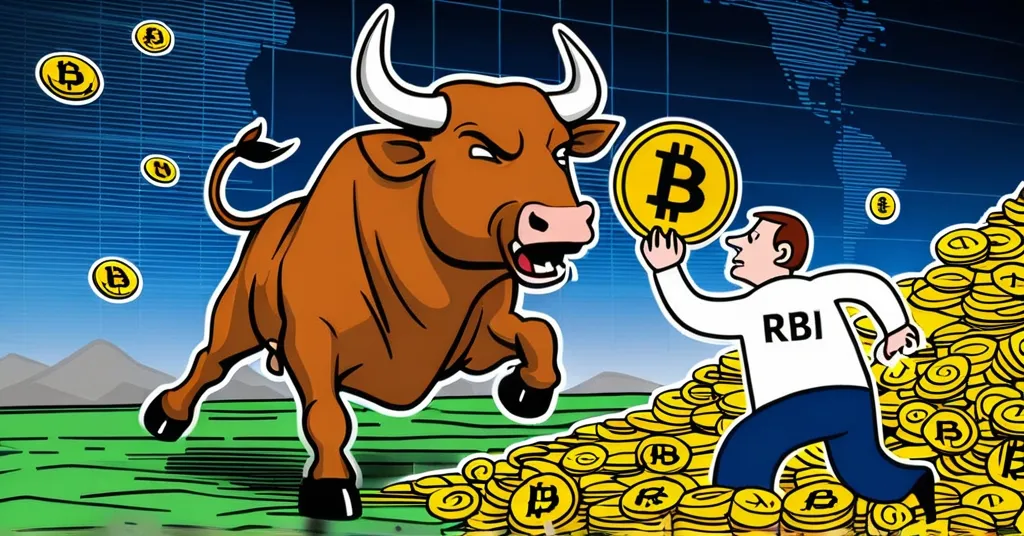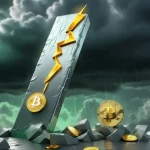RBI Warns of Digital Assets’ Threat to Financial Stability Amid Bitcoin Surge

Reserve Bank of India Warns of Digital Asset Threat to Financial Stability
The Reserve Bank of India (RBI) has issued a stern warning about the potential threats that digital assets, including cryptocurrencies and stablecoins, pose to financial stability. In its December 2024 Financial Stability Report, the RBI outlined several risks that could undermine monetary policy, increase fiscal vulnerabilities, and even threaten global financial stability. This comes at a time when Bitcoin’s price soars past $108,000 following Donald Trump’s re-election, while Indian digital asset exchanges experience a dramatic fivefold increase in trading volume.
- RBI warns of digital asset impact on financial stability
- Bitcoin surge post-Trump victory
- Tokenization raises concerns
The RBI’s concerns are rooted in the potential for digital assets to disrupt traditional financial systems, as backed by the IMF-FSB synthesis paper. The report notes that even though the crypto-asset market remains relatively small, its increasing connections with traditional finance could pose systemic risks. And let’s not forget, stablecoins aren’t off the hook either, with the RBI highlighting their potential run risks.
Bitcoin, the flagship cryptocurrency, has seen its price surge to over $108,000 following Donald Trump’s re-election in the U.S., more than doubling its value in 2024. This wild swing is a testament to the volatility of crypto investments. Meanwhile, Indian digital asset exchanges have been on a rollercoaster ride, with a 90% drop in trading volume due to a 1% TDS (tax deducted at source) followed by a fivefold increase post-Trump’s victory. It’s clear that India’s crypto market is anything but stable, and the RBI’s high alert is justified.
Another area of concern for the RBI is tokenization, a rapidly growing financial innovation where real-world assets are converted into digital tokens using blockchain technology. Tokenization, the process of creating digital representations of assets like real estate or art, could expose new financial vulnerabilities such as liquidity mismatches and increased interconnectedness between traditional and decentralized finance. For those new to the term, liquidity mismatches are akin to a store running out of stock during a high-demand sale, illustrating the inability to meet immediate needs.
Indian Web3 entrepreneurs, such as those at Timechain Labs, are exploring the potential of tokenization, particularly within the BSV ecosystem. They see a future in tokenizing real-world assets, like mutual funds, rather than focusing solely on digital currencies. While the potential is exciting, the RBI isn’t ready to embrace it without caution.
RBI Deputy Governor M. Rajeshwar Rao has called for increased vigilance and the establishment of appropriate safeguards in response to the rise of tokenized assets. His colleague, Michael Debabrata Patra, highlighted the growing adoption of blockchain and tokenized deposits in India, signaling that the RBI is closely monitoring these developments.
“Widespread usage of crypto-assets and stablecoins has consequences for macroeconomic and financial stability. As highlighted in the IMF-FSB synthesis paper, it could reduce the effectiveness of monetary policy, worsen fiscal risks, circumvent capital flow management measures, divert resources available for financing the real economy and threaten global financial stability,” – RBI’s report.
“Even though the size of crypto-asset markets remains small, their continued growth and increasing linkages with the traditional financial system could pose systemic risks. Stablecoins also present potential run risks,” – RBI’s report.
“Another new and rapidly growing financial innovation is tokenization, which refers to the process of creating digital representations – known as tokens – of real-world assets using technologies such as distributed ledger technology (DLT),” – RBI’s report.
As we navigate this evolving landscape of digital assets, it’s crucial to balance optimism with realism. Bitcoin and blockchain technology promise a future of decentralized finance and financial freedom, but as the RBI warns, there are real risks that need to be addressed. The surge in Bitcoin prices and the rise of tokenization highlight both the potential and the pitfalls of this financial revolution.
Here are some key takeaways and questions to ponder:
- What risks does the RBI highlight regarding cryptocurrencies and stablecoins?
The RBI warns that widespread usage could undermine monetary policy, increase fiscal risks, and threaten global financial stability. It also notes potential systemic risks due to the integration of crypto-assets with traditional finance.
- How has Bitcoin’s price been affected by recent U.S. political events?
Bitcoin’s price surged past $108,000 following Donald Trump’s re-election, more than doubling in 2024, reflecting investor optimism.
- What is tokenization, and why is it a concern for the RBI?
Tokenization involves creating digital representations of real-world assets using blockchain technology. The RBI is concerned about its potential to expose financial stability vulnerabilities like liquidity mismatches and increased interconnectedness between traditional and decentralized finance.
- How have Indian digital asset exchanges responded to recent changes?
Indian exchanges experienced a significant drop in volume due to a 1% TDS but saw a fivefold increase after Trump’s victory, indicating resilience and market responsiveness.
- What potential does tokenization hold according to Indian Web3 entrepreneurs?
Indian Web3 entrepreneurs, such as those at Timechain Labs, see significant potential in tokenizing real-world assets, particularly in areas like mutual funds, as opposed to focusing solely on digital currencies.
- What steps are RBI officials suggesting in response to the rise of tokenized assets?
RBI officials, including M. Rajeshwar Rao and Michael Debabrata Patra, have called for increased vigilance and the establishment of appropriate safeguards to manage the risks associated with tokenized assets and blockchain adoption.
While the RBI’s concerns are valid, it’s important to consider that innovation often comes with risks. The promise of decentralized technologies like Bitcoin and blockchain could usher in a new era of financial freedom and inclusion. However, without careful consideration and regulation, we might just be setting ourselves up for a digital disaster. The future of finance is in our hands, and it’s up to us to shape it wisely.



